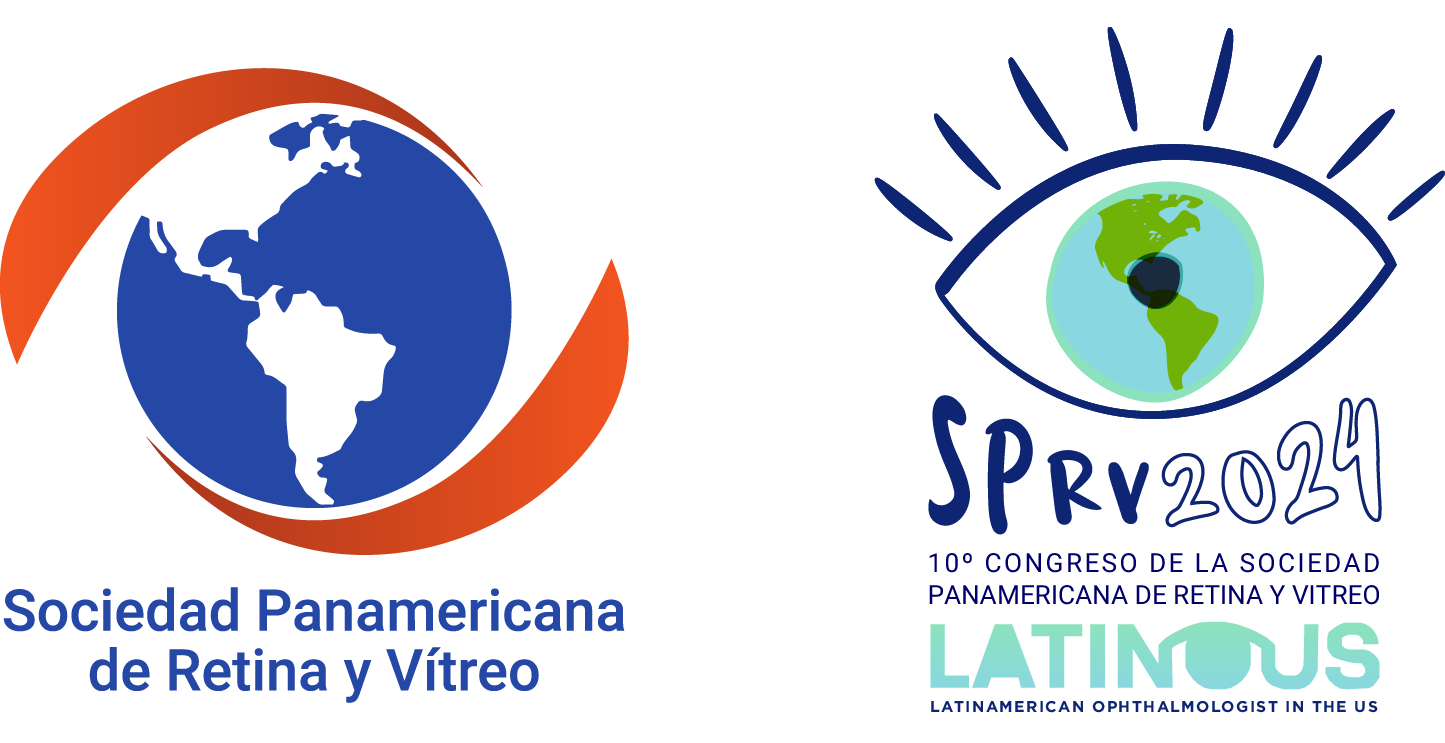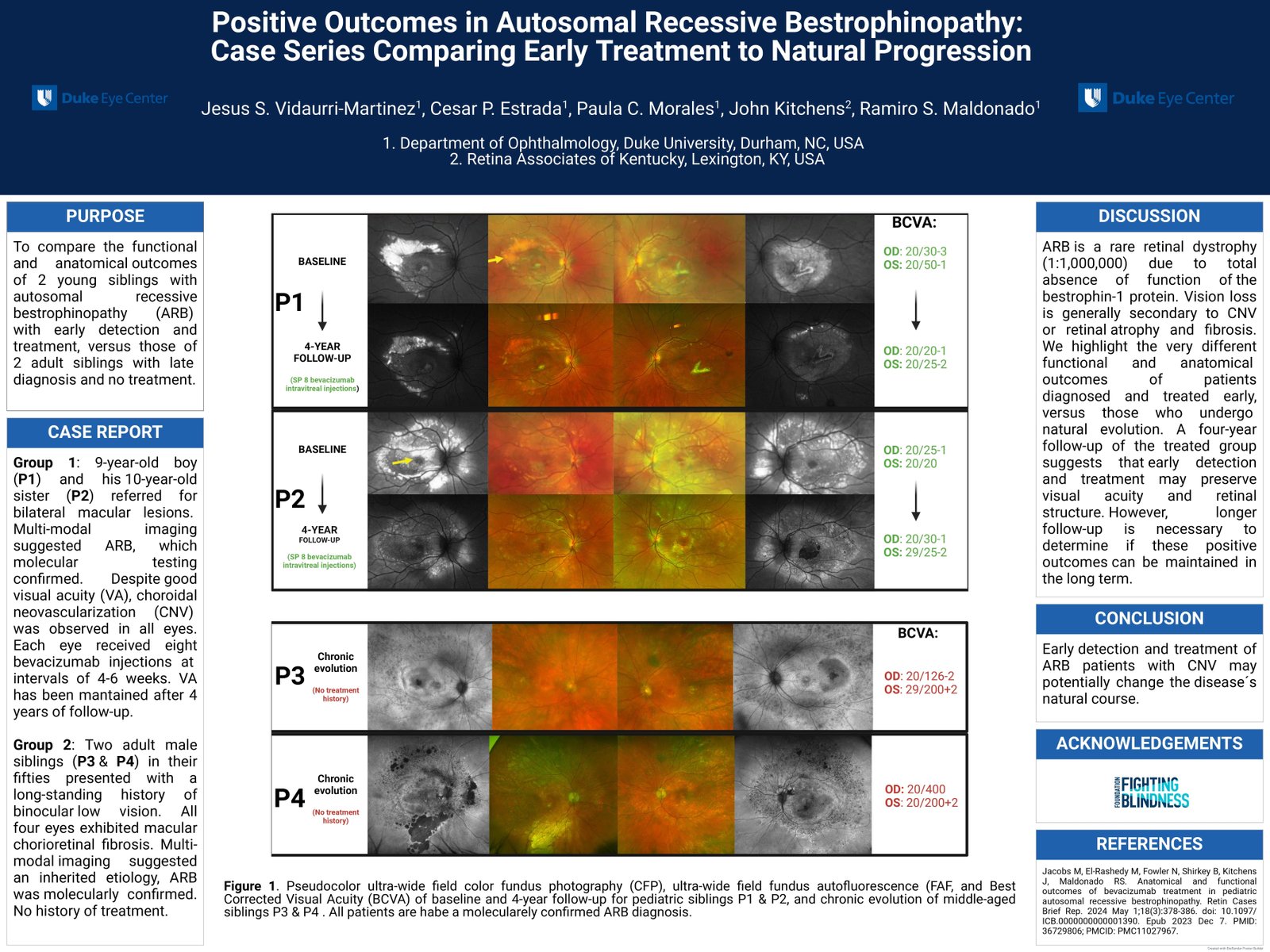CASE REPORT

Positive Outcomes in Autosomal Recessive Bestrophinopathy: Case Series Comparing Early Treatment to Natural Progression
PRESENTING AUTHOR
Jesus S. Vidaurri-Martinez
-
Cesar P. Estrada,"Department of Ophthalmology, Duke University, Durham, North Carolina"
-
Paula C. Morales,"Department of Ophthalmology, Duke University, Durham, North Carolina"
-
Ramiro S. Maldonado,"Department of Ophthalmology, Duke University, Durham, North Carolina"
-
Purpose:
To compare the functional and anatomical outcomes of 2 young siblings with autosomal recessive bestrophinopathy (ARB) with early detection and treatment, versus those of 2 adult siblings with late diagnosis and no treatment.
-
Case Report:
Group 1: 9-year-old boy (Patient 1) and his 10-year-old sister (Patient 2) referred for bilateral macular lesions. Multi-modal imaging suggested ARB, which molecular testing confirmed. Despite good visual acuity (>20/50 in all eyes), choroidal neovascularization (CNV) was observed in all eyes. Each eye received eight bevacizumab injections at intervals of 4-6 weeks.
Group 2: Two adult male siblings (Patient 3 & 4) in their fifties presented with a long-standing history of binocular low vision. All four eyes exhibited macular chorioretinal fibrosis. Multi-modal imaging suggested an inherited etiology, recessive bestrophinopathy was molecularly confirmed. -
Discussion:
ARB is a rare retinal dystrophy (1:1,000,000) due to total absence of function of the bestrophin-1 protein. Vision loss is generally secondary to CNV or retinal atrophy and fibrosis. We highlight the very different functional and anatomical outcomes of patients diagnosed and treated early, versus those who undergo natural evolution. A four year follow-up of the treated group suggests that early detection and treatment may preserve visual acuity and retinal structure. However, longer follow-up is necessary to determine if these positive outcomes can be mantained in the long term.
-
Conclusions:
Early detection and treatment of ARB patients with CNV may potentially change the disease´s natural course.












